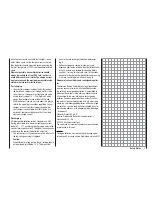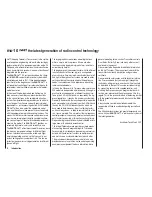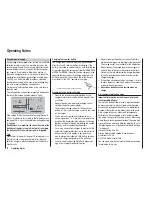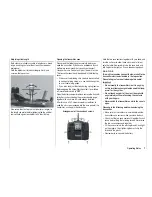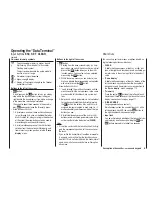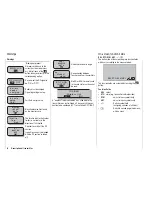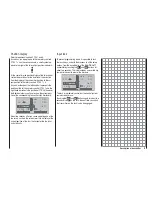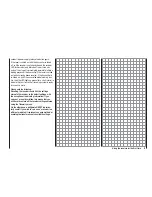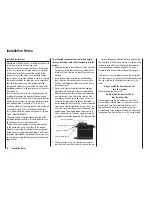
23
Description of transmitter
#01
3:33h
stop
flt
0:00
0:00
5.5V
50%
5.2V
HoTT
M
Note:
If there is an SD card installed, withdraw it BEFORE you
remove the transmitter’s back panel, otherwise there is a
risk that you will damage the card.
Data recording / storage
The process of saving data on the SD card is coupled to
the fl ight timer: if the timer is started, then data saving
commences - provided that a suitable memory card
is in the card slot, and a telemetry connection to the
receiver exists - and ceases again when the fl ight timer
is stopped. The fl ight timer is started and stopped as de-
scribed in the “Timers” section on page 59 for fi xed-wing
models, and pages 67 and 68 for model helicopters.
When data is being recorded, the card symbol
fl ashes constantly and slowly.
When data is being written to the memory card, the
memory card symbol swells from left to right to indicate
the process.
When a data storage process is concluded, you will fi nd
an (empty) “Models” folder and a “Log-Data” folder on
the memory card. The latter contains the log fi les, stored
in sub-folders named “Model name”, using the format
0001 Year-Month-Day.bin, 0002 Year-Month-Day.bin etc.
However, if a model memory has not yet been named,
then you will fi nd the associated log fi les in a sub-folder
named “NoName” when you remove the memory card
from the transmitter and insert it in the card slot of a PC
or laptop. The data can subsequently be analysed on a
compatible PC using the PC program available on the
Download page for the transmitter at www.graupner.de.
Importing voice fi les
As mentioned in the “Headphone socket” section on
page 21, the signals associated with the Telemetry
menu and voice messages can be generated via this
socket, in addition to the transmitter’s audible signals.
These voice messages are collected in a voice package
and stored in the transmitter’s internal memory, but they
can be replaced by a voice package in another language
at any time. For more information on this please refer to
the “
HIDDEN MODE
” section starting on page 26.
Importing and exporting model memories
Any model memories can be copied onto a memory
card in the transmitter, or copied from the card into the
transmitter, so that you can exchange data between
identical transmitters, and also back up your data. For
more information please see the “
Model memories
”
section starting on page 52.
Note:
Some of the special characters used in certain model
names cannot be accepted due to specifi c limitations
of the FAT or FAT32 fi le system used by memory cards.
During the copy process they are replaced by a tilde (~)
character.
Summary of Contents for mx-16 HOTT
Page 7: ...7 For your notes...
Page 37: ...37 For your notes...
Page 41: ...41 For your notes...
Page 45: ...45 For your notes...
Page 51: ...51 For your notes...
Page 55: ...55 For your notes...
Page 81: ...81 For your notes...
Page 103: ...103 For your notes...
Page 133: ...133 For your notes...
Page 141: ...141 For your notes...
Page 161: ...161 For your notes...
Page 173: ...173 For your notes...

